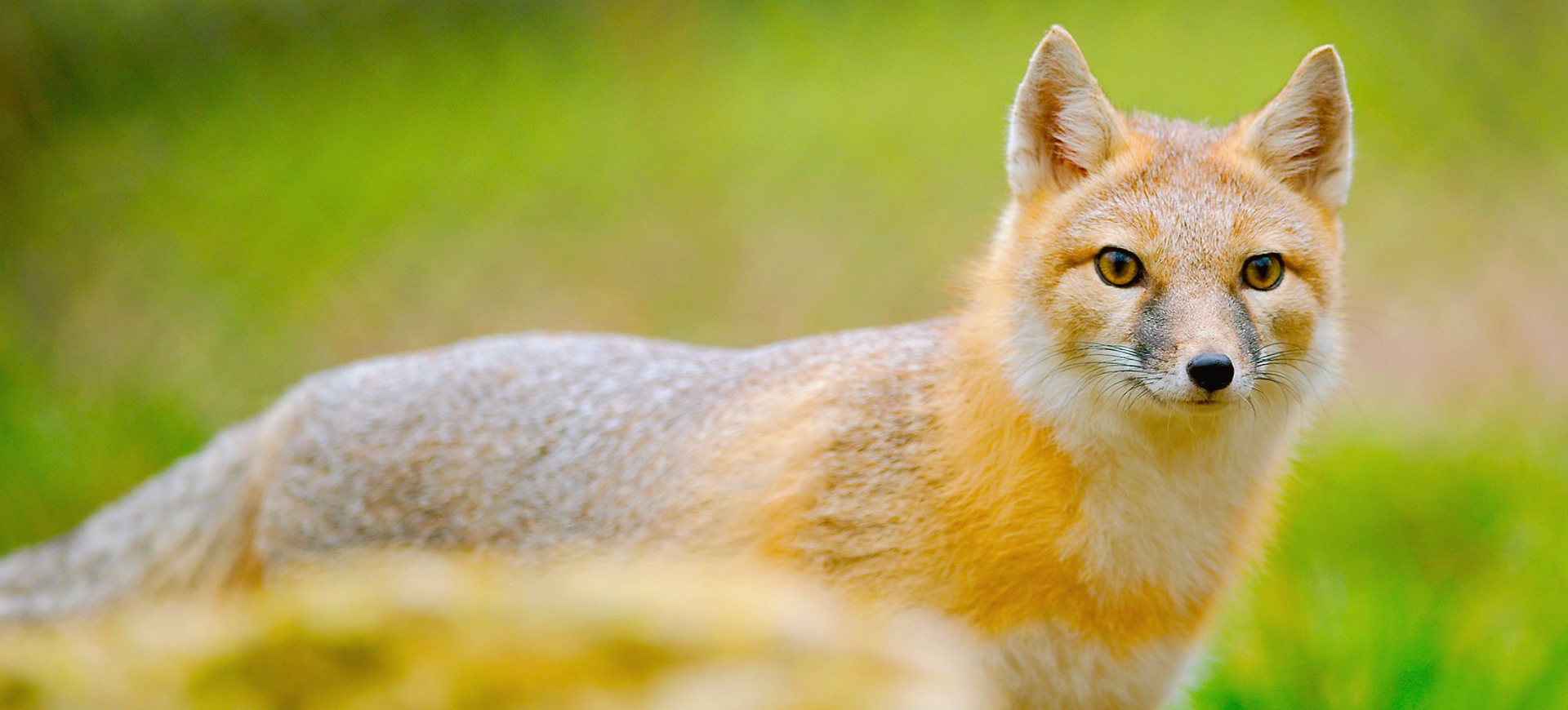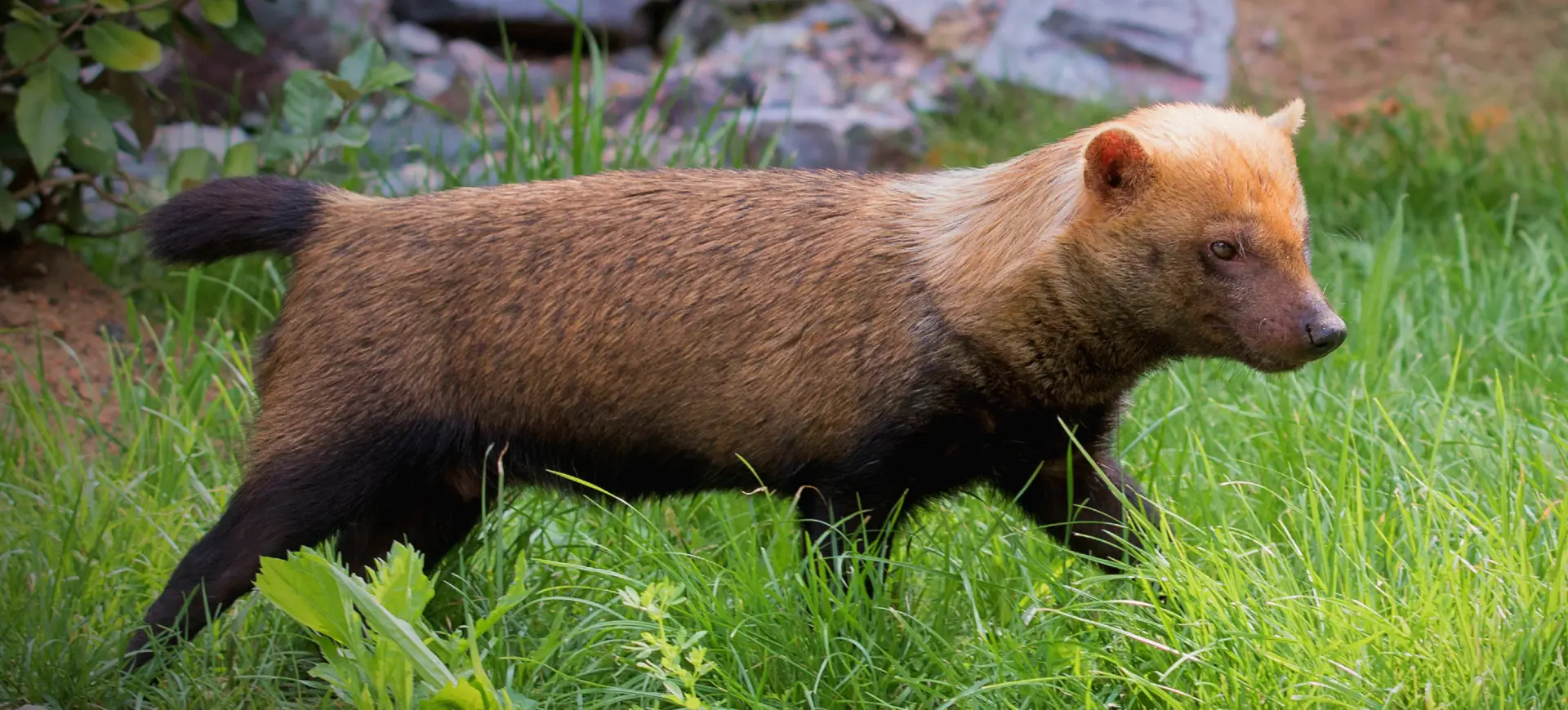Overview
The Bat-eared Fox (Otocyon megalotis) is a small, insectivorous canid native to sub-Saharan Africa’s open grasslands and savannas. It is named for its exceptionally large ears, which can measure up to 5 inches (13 cm) in length and play a critical role in thermoregulation and locating prey. Unlike many other foxes, the bat-eared fox has a specialized diet, feeding primarily on termites and other insects, which makes it a vital part of its ecosystem. Known for its social nature, it typically forms monogamous pairs or small family groups that share responsibilities like raising pups and foraging.
This fox is highly adapted to arid and semi-arid environments, where it thrives in areas with sparse vegetation and sandy soils. Its nocturnal or crepuscular behavior helps it avoid the day’s heat, and its sharp hearing detects insects moving underground. The bat-eared fox is a skilled digger, often creating dens in which it shelters during the day or raises its young. Despite its small size and specialized diet, the bat-eared fox is a resilient species and plays a key role in controlling insect populations in its habitat.
Due to its wide range and stable population, the bat-eared fox is classified as Least Concern on the IUCN Red List. However, it faces threats from habitat degradation, human-wildlife conflict, and diseases transmitted by domestic animals. Conservation efforts focus on habitat protection and educating local communities about the species’ ecological benefits. Its unique adaptations and behaviors make it a fascinating subject for ecological studies and wildlife enthusiasts.
Current distribution:
The bat-eared fox has a wide but fragmented distribution across sub-Saharan Africa. It has two main populations: the southern population in South Africa, Namibia, Botswana, and Zimbabwe, and the eastern population in Ethiopia, Kenya, Tanzania, and Uganda. These populations are separated by the Miombo woodlands, which are less suitable for the species due to dense vegetation and lower insect availability.
Within their range, bat-eared foxes are most commonly found in protected areas such as national parks and reserves, where they benefit from reduced human activity and habitat disturbance. However, they are also known to inhabit agricultural areas and regions with moderate human presence, provided there is sufficient prey and minimal persecution. Their range overlaps with other canids, such as jackals and Cape foxes, but competition is minimal due to their specialized diet.
Physical Description:
The bat-eared fox is small, measuring about 18–24 inches (46–61 cm) in body length, with a bushy tail that adds 8–12 inches (20–30 cm). Its most distinctive feature is its large, bat-like ears, which can grow up to 5 inches (13 cm) in length and are crucial for detecting prey and dissipating heat. The coat is grayish-brown, darker markings on the legs, face, and tips of the ears, and the underbelly is lighter. The bushy tail is tipped with black, complementing the black fur around the eyes and muzzle.
The fox’s small, slender body is built for agility and speed, allowing it to evade predators and chase down fast-moving insects. Its sharp, pointed snout is well-adapted for digging and sniffing out prey, while its long legs enable it to cover large distances in search of food. Males and females are similar in appearance, with males being slightly larger. Juveniles have softer, fluffier fur and smaller ears that grow proportionally as they mature.

Lifespan: Wild: ~6 Years || Captivity: ~14 Years

Weight: Male: 8.8–12 lbs (4–5.4 kg) || Female: 6.6–9.9 lbs (3–4.5 kg)

Length: Male: 18–26 in (46–66 cm) || Female: 17–24 in (43–61 cm)

Height: Male: 12–16 in (30–40 cm) || Female: 11–15 in (28–38 cm)

Top Speed: 25 mph (40 km/h)
Characteristic:
Native Habitat:
The bat-eared fox inhabits sub-Saharan Africa’s open grasslands, savannas, and arid scrublands. It is commonly found in regions with sparse vegetation and sandy or loose soils that facilitate digging. These habitats provide abundant insect prey, particularly termites, which are a staple of its diet. The species thrives in areas with low rainfall, including the Kalahari Desert, East African savannas, and parts of southern and eastern Africa.
Bat-eared foxes often construct dens in the ground by digging their own or modifying abandoned burrows of other animals, such as aardvarks or warthogs. These dens are essential for shelter during the day, protection from predators, and raising pups. Water availability is not critical for this species, as it obtains most of its moisture from its diet. However, habitat degradation due to overgrazing, agriculture, and human expansion threatens the availability of suitable environments.
Biomes:
Biogeographical Realms:
Continents:
Countries:
Diet:
Diet & Feeding Habits:
The bat-eared fox is primarily insectivorous, with over 80% of its diet consisting of termites, especially those of the Hodotermes genus. It also consumes other insects, such as beetles, grasshoppers, ants, and crickets, using its large ears to locate prey underground and its sharp claws to dig them out. It supplements its diet with small mammals, reptiles, birds, eggs, and fruit during insect scarcity, demonstrating some dietary flexibility. Its low-slung jaw and numerous small teeth (46–50, more than any other canid) are specialized for chewing insects efficiently.
Foraging typically occurs at night or during the cooler parts of the day, depending on local climate and prey availability. Bat-eared foxes can consume thousands of termites in a single feeding session, making them crucial for controlling insect populations in their habitat. They often forage in pairs or small groups, moving methodically through their territory and covering vast areas in search of prey. In captivity, their diet is supplemented with insects, meat, and specialized canid food to meet their nutritional needs.
Mating Behavior:
Mating Description:
Bat-eared foxes are monogamous and form long-term pair bonds, though some individuals may exhibit cooperative polygamy by associating with multiple partners. Breeding typically occurs once a year, with the timing varying depending on the region and climate. After mating, females undergo a gestation period of about 60–70 days, giving birth to a litter of 2–6 pups in a secure underground den. Both parents are highly involved in raising the pups, with the male often taking on the primary role of guarding and grooming them while the female forages.
Pups are born blind and helpless but develop rapidly, opening their eyes at about 10 days and starting to explore outside the den by 3 weeks of age. They are weaned at around 6–8 weeks but remain with their parents for several months before becoming fully independent. The strong parental care and social cohesion within family groups contribute to the species’ relatively high reproductive success. Bat-eared foxes reach sexual maturity at about 9–10 months of age.
Reproduction Season:
Birth Type:
Pregnancy Duration:
Female Name:
Male Name:
Baby Name:
Social Structure Description:
Bat-eared foxes are social animals. They typically form small family groups consisting of a monogamous pair and their offspring. Both parents share responsibilities such as grooming, guarding, and teaching pups how to forage, with males often taking a more active role in pup care than females. Outside the breeding season, individuals may form temporary foraging groups, though they remain highly territorial and use scent marking to defend their home range.
Communication within groups involves a combination of vocalizations, body language, and scent marking. High-pitched barks, growls, and whines coordinate activities and warn of predators. Cooperative behaviors within family groups ensure the survival of the young and strengthen social bonds. This social structure contributes to the species’ ability to thrive in challenging environments.
Groups:
Conservation Status:
Population Trend:
Due to its adaptability and wide distribution, the bat-eared fox population is considered stable and widespread, with no immediate risk of extinction. Local population densities vary depending on habitat quality and prey availability, with some areas supporting higher densities during the rainy season when insect populations peak. Protected areas like the Serengeti National Park and the Kalahari Desert are strongholds for the species, providing refuge from habitat destruction and human activity.
Outside protected areas, bat-eared foxes face habitat degradation, competition from livestock, and diseases like rabies and canine distemper transmitted by domestic dogs. However, their specialized diet and ability to thrive in arid environments reduce competition from other carnivores and contribute to their ecological resilience. To address potential future threats, continued monitoring and habitat conservation efforts are necessary.
Population Threats:
The primary threats to bat-eared foxes include habitat loss due to agriculture, overgrazing, and human settlement, which reduce prey availability and suitable denning sites. Diseases such as rabies, canine distemper, and sarcoptic mange, often transmitted by domestic dogs, pose a significant risk to wild populations. Hunting and trapping, though relatively rare, occur in some areas where the species is mistakenly perceived as a threat to livestock or poultry.
Climate change may also impact bat-eared fox populations by altering the distribution and abundance of insect prey. Additionally, road mortality is a concern in regions with increasing human infrastructure, as the foxes are often active near roads at night. Efforts to reduce human-wildlife conflict, control domestic dog populations, and preserve natural habitats are essential for mitigating these threats.
Conservation Efforts:
Conservation efforts for the bat-eared fox focus on habitat protection, disease control, and public education about its ecological importance. Protected areas such as national parks and wildlife reserves provide critical habitats where the species is shielded from habitat degradation and hunting. Vaccination campaigns targeting domestic dogs in areas near bat-eared fox populations help reduce the spread of diseases like rabies and canine distemper.
Artificial den sites and habitat restoration projects in degraded areas have been implemented in some regions to support population recovery. Public awareness campaigns emphasize the fox’s role in controlling insect populations, particularly termites, which benefit natural ecosystems and agriculture. Ongoing research and monitoring programs are vital for understanding population trends, habitat use, and the impacts of human activity on this unique species.
Additional Resources:
Fun Facts
- The bat-eared fox has up to 50 teeth, more than any other canid. These teeth are specialized for chewing insects.
- Its large ears can detect the movement of insects underground and help dissipate heat in hot climates.
- It can consume over 1.15 million termites annually, making it a crucial pest controller.
- Unlike many canids, bat-eared foxes are primarily insectivorous, with termites comprising most of their diet.
- The species is known for its strong parental care, with males actively raising pups.
- Bat-eared foxes use abandoned aardvark and warthog burrows as dens but are also skilled diggers.
- Their small size and agility help them evade predators like jackals, lions, and hyenas.
- They are crepuscular or nocturnal, foraging during cooler hours to avoid the day’s heat.
- Their scientific name, Otocyon megalotis, translates to “large-eared dog.”
- Despite their resemblance to foxes, they are unique among canids due to their highly specialized diet and social behaviors.



























